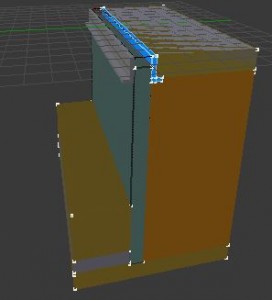Diaphragm walls
Diaphragm walls are often used for large impermeable excavation pit systems with great depths. Especially due to a high groundwater level, they are exercised in urban areas with surrounding housing. Therefor a waterproofed pit wall as well as a bottom sealing is necessary. Compared to diaphragm walls a variety of other methods exist, such as overlapped bored pile wall or steel pilings. Method of choice depends next to safety- and serviceability requirements, also on economic boundary conditions.
In the following picture the diaphragm wall is shown in its final excavation state, while a bottom sealing is already produced and the one side of the guide wall has been removed.
Throughout the development of an ontology a designer of a diaphragm wall becomes aware of aspects he need to consider while designing his excavation wall by determined classes (Material, Boundary condition, wall use, components). Later this results have been visualized in a blender file.
Setting the domain of the ontology and parametric model accords to Noy & MyGuinness (Noy & McGiuness, 2000):
- What is the expression of the system?
A description of an excavation wall with its components, characteristics and its properties that need to be considered when designing an excavation system.
- For what can it be used?
To apply this type of excavation wall for future projects (To reuse of domain knowledge). Examine and develop improvements of the method of excavation walls with changing boundary conditions. For comparison with other solution options.
- For what types of questions the information of the system should provide answer?
What is the one-phase slurry wall used for?
Furthermore: Is this method of excavation wall transferable to other projects? What kind of alterations are possible in changing conditions? What improvements are possible to work more efficient?
- Who will use and maintain the system?
Underground engineers to design related projects or structural engineers to create interfaces.
